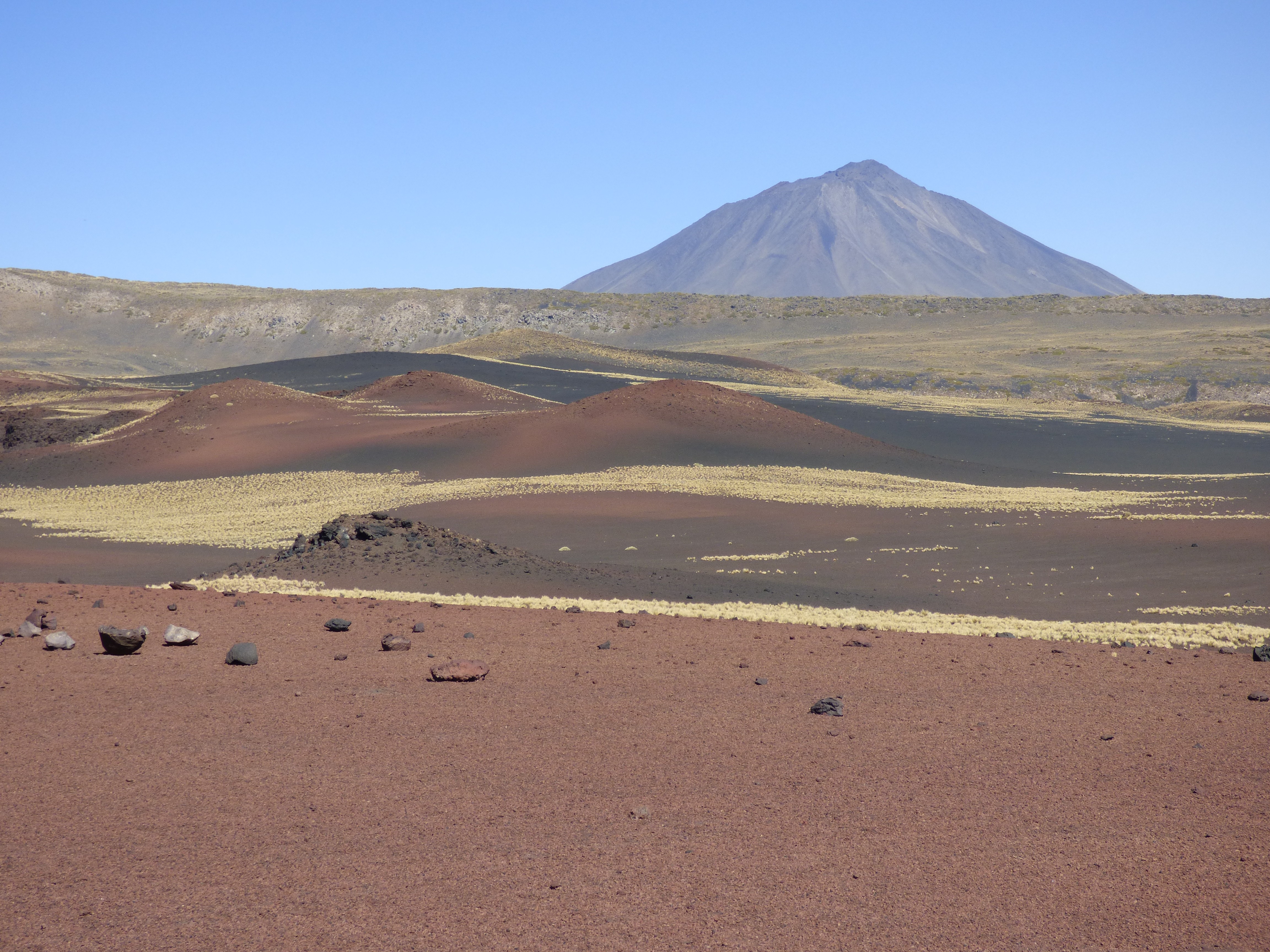To break up our bus journey from Mendoza to San Carlos de Bariloche, we take a bus trip to La Payunia, a park with hundreds of volcanoes.
When we’d had enough steak and wine in Mendoza, we started planning how to get to our next destination, Bariloche. It turned out that it was nightbus or bust to get there, and that the next two nights were fully booked. So when we started looking around for things to fill our time that would be a bit more active than sipping Malbec, we stumbled on Malarguë. We liked to think it was pronounced Mala-goey but when we queued up for our Cata bus to get there, we realised everyone else was saying Malag-uay. It was a 6 hour ride from Mendoza (we went via the not-very-on-the-way San Rafael) and found it to be a very sleepy little town (only 26,000 inhabitants) when we arrived. Bright blue skies, full sun and a little cooler temperatures were good for us.
We instantly liked the small-town feel of Malarguë – our accommodation hosts were extremely friendly. And it turned out we’d booked a place to stay right next door to a craft beer bar, so we toasted that (and the fact we’d made it to the laundrette before it closed) with a couple of pints. After Kim ate half a football-sized lomito and I half a pasta dish, we called it a night as the main reason for our visit had an early start the next day.
At 8am we were up and waiting for our Karen Travel tour to La Payunia, a volcanic park about 200km south of the town. Yes, Malarguë really is the closest town, so we set off on a 2-hour drive in an off-road truck with about 8 other people, and shook, rattled and rolled our way to the Rio Grande bridge at the edge of the park. After a stretch of legs, a few photos and a coffee and croissant, we got back in for another 1.5 hours of shaky-shaky until we reached the official entrance to the volcanic park.
We felt like we’d been dropped on another planet. All around, all you can see is volcanic landscape, some shrubs and a few guanacos which seem to just stand and stare. We got out here to take some more photos, then back in again to drive up to a short trail which we walked to the crater of Volcan El Morado.

This isn’t the biggest volcano in the park but it is one of the ones that erupted most recently (though still thousands of years ago). When you stand on the edge on the crater, you can see that a large section of it is gone, and you can clearly follow the lava flow that disintegrated it down the slope. It’s really hard to capture this in a single image, but it is easy to see on Google maps’ satellite view. Scrolling around a bit will also show just how many craters there are in this park – hundreds. Every now and then we came across stretches that were covered in roughly spherical rocks, varying in size from about a loaf of bread to a beanbag. A geologist who happened to be in our group explained that these are actually blobs of lava that – as they were ejected and hurtling through the air – cooled down, solidified, and landed as solid rock. You wouldn’t want to be anywhere nearby when these things come raining down.
It was a long, hot and rattly day with an awful lot of time in a bus (again…) but this was definitely the highlight of our trip so far. The park only seems to allow one small bus group in per day so we were totally on our own. It was a strange feeling to stand at the crater and not be able to see any sign of civilisation in any direction, other than the 7 other people with you.
We arrived back just before 9pm so it was a 12 hour day. The price (3400 Argentine pesos per person) included the transport, a guide who wasn’t actually that helpful in any language (we learnt more from the visiting geologist), a coffee/croissant late morning and a sandwich lunch with a bit of fruit at about 4pm. We booked the tour by sending a whatsapp message (in Spanish) to Karen Travel a couple of days before, and just providing all our info in advance that way, but we paid the night before the tour in the office in Malarguë town. We wouldn’t recommend the town for the town’s sake as there aren’t many places to eat in the evenings, but we’d definitely recommend the day trips – it was well worth the diversion between Mendoza and Bariloche. Karen Travel offers lots of other activities too which aren’t that well described on their website, so here’s a photo of their flyer.

The next day from Malarguë we had to head back to San Rafael on a 2.5-hour Buttini bus ride to make our connection to Bariloche. Nine-year-old Francesco, travelling back home after staying with relatives for the summer holidays, decided that practising his English with Kim would help pass the time quicker. In San Rafael we had a 6 hour wait in a park (Argentine parks are great for killing time, we’ve learnt) before the next step.

